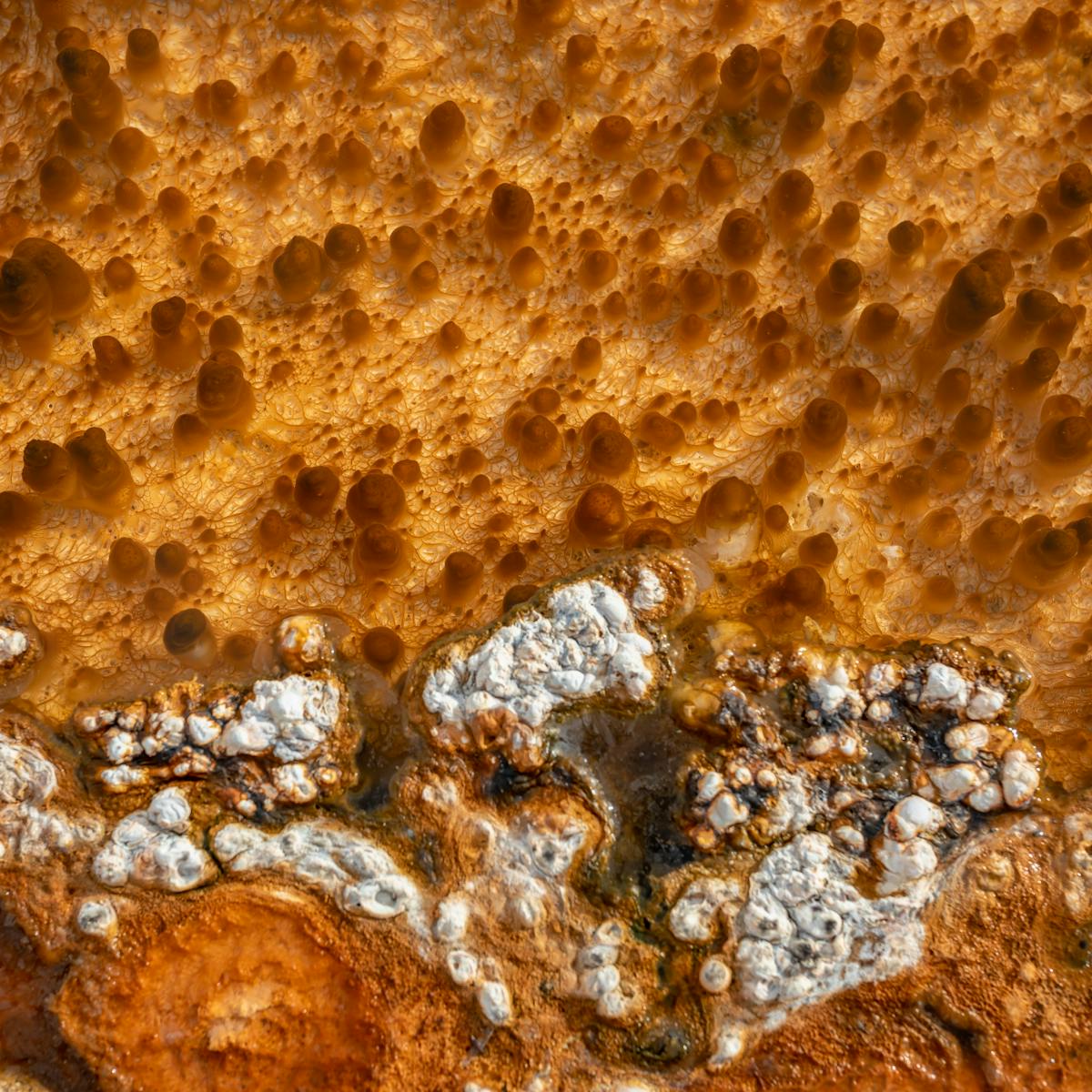After being diagnosed bipolar and prescribed lithium, Laura Grace Simpkins experienced a period of stability, then the surprise return of glitter and sin. At first, she was happy just to take the pills, but she gradually wanted to know more about how her medication worked. The more questions she asked, the more she realised how little is known about this powerful drug.
Investigating what lithium is and how it works
Words by Laura Grace Simpkinsphotography by Matjaž Krivicaverage reading time 6 minutes
- Serial

I keep a packet of lithium tablets in my bedside table. “Priadel® 400mg. Prolonged-release tablets. Lithium carbonate” is printed in an inoffensive pink font on its silver-foil wrapper. “Do not chew or crush the tablets.”
I pop one out of its sweet little pouch, savouring for a moment the sound of the seal tearing, and push it up and out with the pad of my left index finger. I hold it between two fingertips, rotating it this way and that.
The tablet is as circular, as white, and as pure as a communion wafer. One side has ‘PRIADEL’ stamped onto it in capital letters; the other a simple line bisecting its middle. It is approximately 1 cm in diameter and 3 mm thick. I take it to my mouth and lick it. It tastes of chemicals and salt.
Next, I put the tablet on my bedside table and crush it under the base of my hand. I play about with the fine, granular dust, sweeping it into a tiny conical pile, dividing it out into thin white lines. Then I brush the dust into the bin.
The ‘Cinderella’ of psychotropics
I’d been taking Priadel for a year and a half when I decided to ask my doctor two simple questions: “What is lithium?” and “What does it do?” She looked blank, and then relief washed over her face as she remembered the NHS had a website.
The NHS website confirmed that lithium is a medication used to ‘treat’ bipolar disorder. Under the common questions section, I found this: “We do not really know exactly how lithium works for mental health conditions, though we do know it’s very effective.” I didn’t find that answer very effective, and my dissatisfaction with it sparked off an investigation. During the day I would write about art and at night I would read about lithium.
We don’t know exactly how lithium works for mental health conditions, though we do know it’s very effective.
Lithium was found in a rock in 1817. While it’s in everything nowadays – batteries, glass, ceramics, lubricants, pyrotechnics, nuclear weapons – for the first 100 years after its discovery, lithium was used solely for medical purposes, as a cure-all-ills kind of tonic.
That lithium could be a medication for bipolar disorder is usually, but not uncontroversially, accorded to an Australian psychiatrist, John Cade. An article of Cade’s published in the Medical Journal of Australia in 1949 claims that lithium had abated symptoms of mania in patients under his care. His excited proclamations were largely overlooked until a debate about lithium’s potential to prevent relapse came to a head during the 1960s.
Both sides viewed lithium as the ‘Cinderella’ of psychotropics. With glee, I followed the exchange across several issues of the American Journal of Psychiatry. The proponents celebrated lithium’s rags-to-riches, salt-to-salvation story, which the sceptics derided as the product of wishful thinking by psychiatrists with fairy-godmother complexes. Lithium was akin to “converting a pumpkin into a stagecoach” one wrote.
Ultimately, the UK approved lithium carbonate in 1966, where it has since been the go-to – or, as my psychiatrist put it, “gold standard” – mood stabiliser for the management of bipolar disorder. As a psychotropic, it’s unique for a further reason: all of the others are synthesised in laboratories.
Lithium may have been used in the UK for over 50 years, but as psychiatrist Joanna Moncrieff summarises in ‘The Myth of the Chemical Cure’: “There has never been a convincing disease-specific explanation of how lithium or other drugs might act in manic depression.” Psychiatrist David Healy in his 2008 book ‘Mania’ concurs.
How lithium works remains speculative and theoretical – at best. In his article, John Cade suggested that because lithium so specifically targets mania, perhaps mania might be caused by a deficit of lithium in the body. This hypothesis, as commonsensical as it may appear, was quickly dismissed. Lithium is barely present in the human body and has a minimal biological function.
The NHS website states feebly that there are several other hunches: “One is that it works by protecting and helping to create neurons.” There is no proof bipolar disorder is caused by a deficit of neurons.
In fact, as historian of psychiatry Anne Harrington writes in ‘Mind Fixers’, there is, as yet, “no biological proof to mental health conditions”, including bipolar disorder. Harrington argues that lithium is popular with psychiatrists because any success with it would imply bipolar’s biochemical cause. My head spun with the loops of this circular, tautological argument. The psychiatrist I’d seen knew at least a bit less than she was letting on.
Bipolar culture
Maybe people who actually consumed lithium would know more about how it worked. I immersed myself in bipolar culture. I watched TV episodes like ‘Take Me As I Am, Whoever I Am’, from the New York Times’s ‘Modern Love’ series. I read countless bipolar memoirs like Kay Redfield Jamison’s canonical ‘An Unquiet Mind’ and Jaime Lowe’s ‘Mental’. Both Redfield Jamison and Lowe celebrated lithium as a miraculous mineral, a sacrosanct substance key to their recoveries, but didn’t scrutinise what it was as much as I did.
My investigation had to go on hold while I started my next degree, at Cambridge. At Christmas I came home and helped out at the art gallery. One night I was working at the bar, pouring champagne. The tremor was conspicuous; even my most polite colleagues pointed it out.
“It’s just the medication I’m on. I’m bipolar,” I would say casually, flippantly, without a second thought, to anyone who would listen.
That might have been the night I drank on the job, threw some alarmingly expressive shapes on the dance floor, and nearly high-kicked my boss in the face. I didn’t know it then, of course, but that was the last night I’d have a drink.
I cringed the next morning, all glitter and sin. Wasn’t lithium supposed to stop me from doing embarrassing stuff like that? Maybe there was more me left in me than I realised.
About the contributors
Laura Grace Simpkins
Laura Grace Simpkins writes and performs about herself, madness and death. Her writing has been published by the Guardian, New Scientist and the British Medical Journal’s Medical Humanities, as well as broadcast on BBC Radio. She is currently working on her first book.
Matjaž Krivic
Matjaž Krivic is a documentary photographer capturing stories of people and places, primarily focusing on environmental issues. For over 25 years he has covered the face of the earth in his intense, personal and aesthetically moving style that has won him several prestigious awards. The past six years he has been immersed in the visual documentation of the lithium industry and also how companies and even countries are essentially washing away the climate sins of the past to create a greener and sustainable future.

